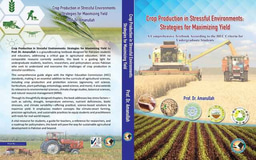Smart Nutrition for Winter Cereals: Unlocking Water Use Efficiency with NPK Sources
Published in Earth & Environment and Agricultural & Food Science

Smart Nutrition for Winter Cereals: Unlocking Water Use Efficiency with NPK Sources
Winter cereals like wheat, rye, barley, and oats are vital to global food security, but their productivity depends on efficient nutrient and water use. A groundbreaking greenhouse study at West Texas A&M University reveals how different NPK formulations uniquely impact growth rates and water use efficiency (WUE) across these crops at critical growth stages (30, 60, and 90 days after emergence).
Key Findings for Farmers & Agronomists:
-
Barley and wheat outperformed rye and oats in early growth (30 DAE), showing higher absolute growth rate (AGR), crop growth rate (CGR), and WUE across all NPK treatments.
-
High-nitrogen fertilizers (e.g., 31-11-11, 24-8-16) reduced WUE by mid-growth (60 DAE), stressing balanced NPK ratios for water conservation.
-
NPK 20-20-20 boosted barley’s late-stage growth, while 10-10-10-20S (with sulfur) optimized oats, highlighting crop-specific nutrient needs.
-
Acidic NPK (31-11-11) harmed all crops, lowering growth and WUE—a caution against mismatched fertilizers.
Why This Matters:
By matching NPK sources to crop-specific demands, growers can enhance yields while conserving water—a critical advantage in drought-prone regions. Barley’s resilience and oats’ sulfur responsiveness offer actionable insights for sustainable cereal production.






Please sign in or register for FREE
If you are a registered user on Research Communities by Springer Nature, please sign in